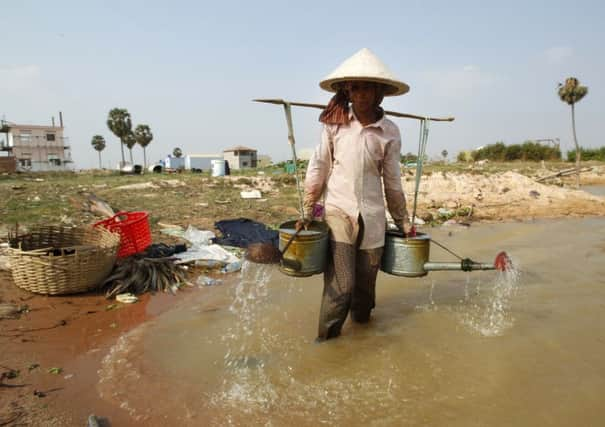Vietnam warns over damage from 11 dams planned for Mekong river


The two and a half year study by Danish water expert DHI was submitted recently by Vietnam to the Mekong River Commission, a body encompassing Thailand, Vietnam, Cambodia and Laos that was set up to mediate the conflicting water priorities of Mekong countries. The commission released a five-page summary of the study yesterday.
It predicts “high to very high adverse effects” on fisheries and agriculture in Cambodia and Vietnam if all 11 dams are built, and even greater damage if the Mekong’s tributaries also are dammed. The famed Irrawaddy dolphin would likely disappear from the Mekong, it says.
Advertisement
Hide AdAdvertisement
Hide AdUnmitigated hydropower development will cause “long-lasting damage to the floodplains and aquatic environment, resulting in significant reduction in the socio-economic status of millions of residents,” according to the study.
Much of southeast Asia is suffering a record drought due to El Nino, and officials in Vietnam have said the effects are exacerbated by existing Chinese dams on the upper Mekong. The rice-bowl-sustaining river system flows into Myanmar, Laos, Thailand, Cambodia and Vietnam.
The Mekong is also one of the world’s largest inland fisheries, providing a livelihood to millions of people. Dams diminish fishing grounds by creating barriers to breeding-cycle migrations and creating river conditions that destroy habitat and food sources.
The study said agricultural production in the lower reaches of the Mekong Delta would drop steeply because the dams would trap river sediments, resulting in large reductions in the volume of nutrients flowing downstream. Less sediment downstream would also make the delta more at risk of saltwater incursion that can render land infertile.
It predicts annual fishery and farming losses of more than $760 million (£ 536 m) in Vietnam and $450m in Cambodia. Fish catches would drop by 50 per cent for Vietnam and Cambodia, and 10 per cent of the delta’s fish species would either disappear from the region or become extinct. The incomes of fishing and farming villages would likely fall by half.
Laos is behind many of the new dams proposed for the lower Mekong and went ahead with construction of the Xayaburi dam in 2012 despite the concerns of neighbouring countries.